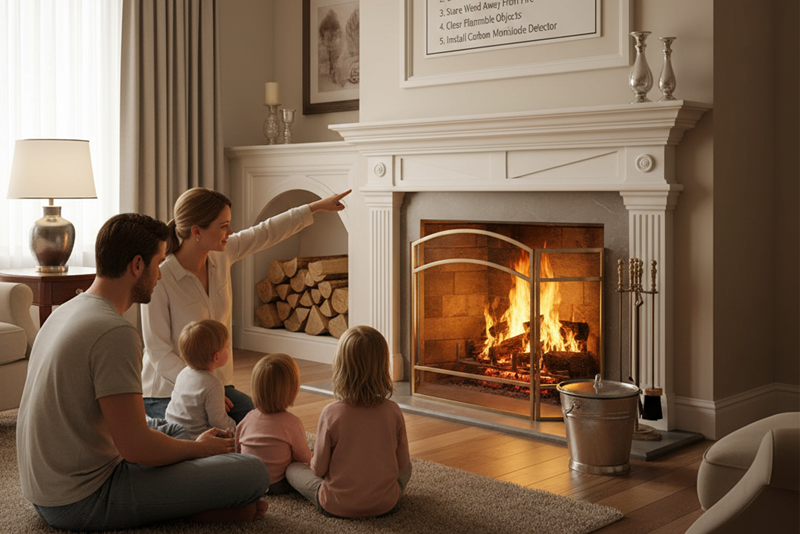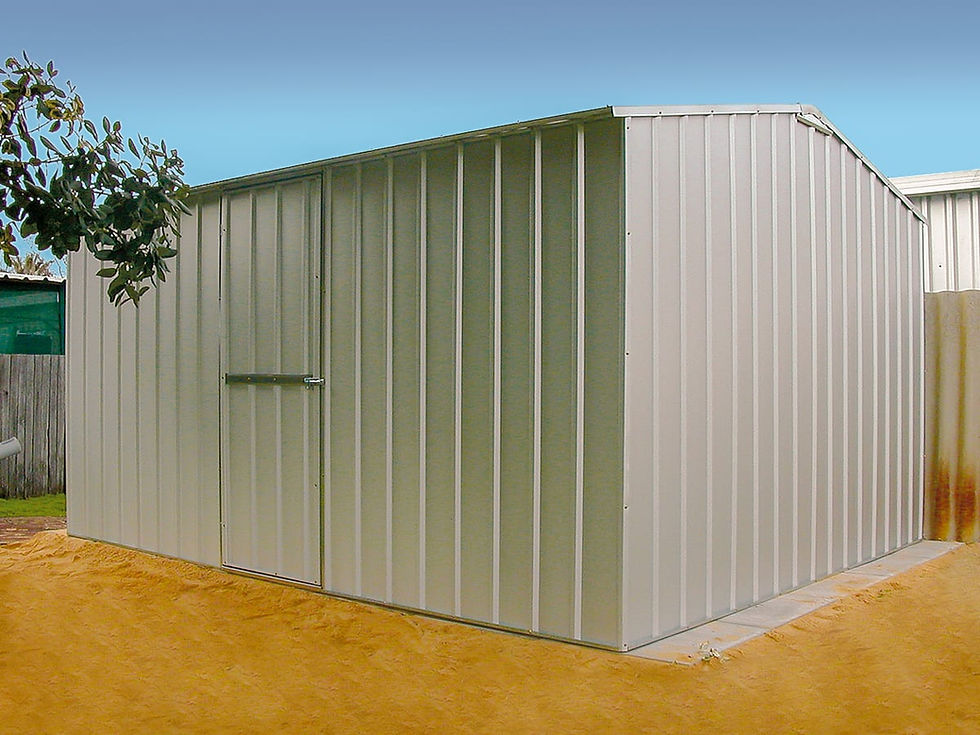The Ultimate Guide to Fireplace Safety and Maintenance: A Must-Read for Every Homeowner
- Kiera Peterson
- Dec 8, 2023
- 6 min read
Updated: Nov 11, 2025
When temperatures drop, nothing can beat the warmth and ambiance provided by a roaring fire in the fireplace. Fireplaces come in several types, each with their distinct advantages, aesthetic features, and maintenance requirements. While some homeowners might prefer the traditional wood-burning fireplaces, others might opt for gas or electric variants. Understanding the differences and unique attributes of each type is vital for their safe use and maintenance.
Moreover, a well-maintained fireplace is more than just a source of comfort; it's an investment that can add significant value to your home. Therefore, understanding the safety and maintenance requirements of your fireplace is paramount. It is not just about keeping the charm alive but also about preventing any unfortunate incidents that might arise due to ignorance or negligence.
Fireplaces, if improperly maintained or used, can pose various risks, including fire hazards and harmful gas emissions. Hence, learning about the necessary safety precautions and maintenance guidelines should not be an option but a necessity for every homeowner.
Embracing Fireplace Safety: Where to Begin?
Having a fireplace requires a sincere commitment to safety. Irrespective of the fireplace type you have, neglecting its maintenance can lead to various safety hazards. These can range from minor issues like bad Odors and inefficient heating to major risks like hazardous gas leakage and house fires.
The basics of fireplace safety revolve around a good understanding of your fireplace workings and its regular maintenance. This starts from the basics, such as keeping the area around the fireplace clear of flammable materials, to the more complex, like ensuring that the chimney or flue is clean and fully functional.
Moreover, remember never to leave the room unattended when the fireplace is burning and to install if you haven't already, fire alarms throughout your home. Doing so will ensure that if an issue arises, you will be alerted as early as possible, enabling quick response.
In addition, consider conducting regular fireplace inspections. These can identify any issues before they escalate into significant problems. They could also be the key to prolonging the lifespan of your fireplace, thereby protecting your investment.
Different Fireplace Products and Their Unique Safety Features:
Thanks to technological advancements, there is a wide range of fireplace products available in the market today. Each product comes with unique safety features designed to reduce the associated risks, increase efficiency, and enhance user experience.
For instance, gas fireplaces come with oxygen depletion sensors. These sensors automatically shut down the fireplace when oxygen levels within the room drop below a certain level, hence preventing carbon monoxide buildup. On the other hand, electric fireplaces feature automatic shut-off timers which can be used to set the duration after which the heater will turn off.
Traditional wood fireplaces might not have these modern safety features, but that doesn't mean they lack safety measures. One crucial safety feature for wood fireplaces is the screen or glass doors, designed to prevent sparks from flying out into the room. Additionally, wood-burning fireplaces have air controls that can be used to control the burning rate, thus minimizing the risk of overheating.

Top 10 Safety Tips for Electric, Gas, and Wood Fireplaces:
The safety of your home and loved ones should always be a top priority when using a fireplace. Due to the unique characteristics of different types of fireplaces, the safety measures for each type vary.
For electric fireplaces, some safety tips include avoiding the use of extension cords, not placing flammable items near the fireplace, and not using the fireplace as a dryer. For a gas fireplace, ensure to have a qualified professional install it, maintain a good ventilation system, and install carbon monoxide detectors in your home. With a wood fireplace, always keep the fire small to medium to avoid overheating, keep any flammable materials at a safe distance, and regularly empty and clean the ash dump.
Observing these safety measures will ensure not only your safety but also the longevity of your fireplace. Furthermore, not only do they help in avoiding personal harm, but they also offer extended protection to your property against fire and other potential damages.
A Comprehensive Guide to the Maintenance of Different Fireplace Kinds:
Proper maintenance of your fireplace is the key to its optimal performance and your safety. Each type of fireplace calls for a different maintenance routine, and understanding these differences can save you a significant amount of time and resources.
For wood-burning fireplaces, maintenance activities might include the regular removal of ash and soot, annual inspection of the flue to check for any possible blockages or creosote buildup, and checking for cracks in the firebox. Electric fireplace maintenance, however, is a lot simpler. It mainly involves regular cleaning of the heater's exterior and control compartment and occasionally checking the unit’s wiring.
For gas fireplaces, always keep an eye on the flames. If they turn yellow instead of blue, it might be a sign of dirt buildup and your unit might need servicing. Furthermore, ensure that the vents are clean and unblocked and frequently check for signs of rust or other damage to the unit.
Given the complexity and demands of some of these tasks, it is recommended to hire professional services for your fireplace maintenance. However, simple tasks like regular cleaning and monitoring of your fireplace can be performed by the homeowner.

DIY Tips: Equipping Yourself for Fireplace Maintenance
While hiring a professional is recommended for complicated fireplace maintenance tasks, some procedures can be performed at home. Here are some essential tools you might need for your fireplace maintenance:
Fireplace brush and shovel: This set is incredibly handy for cleaning the firebox in wood-burning fireplaces.
Chimney brush and rods: If you are comfortable climbing onto your roof, you can use these to clean out the soot from your chimney.
Vacuum cleaner: A regular home vacuum cleaner can be used for removing dust and soot from electric and gas fireplaces.
Inspection mirror: Useful for seeing into hard-to-reach areas within your fireplace or chimney.
When it comes to safety during these maintenance activities, avoid wearing flammable or loose-fitting clothing and always wear protective equipment such as goggles and gloves. Furthermore, never attempt to clean a hot fireplace; always wait until it has fully cooled down to avoid burns.
Understanding the Dos and Don’ts of Fireplace Maintenance-
Proper fireplace maintenance requires more than just cleaning and servicing. Here are some vital dos and don'ts to keep in mind.
Among the key dos is having your fireplace and chimney inspected and cleaned annually, preferably before the heating season. Always burn seasoned wood (if you have a wood fireplace) to reduce the amount of creosote that forms in your chimney. If you have a gas fireplace, remember to clean the glass regularly using a cleaner made specifically for gas fireplace glass.
As for the don’ts, do not use your fireplace as a home incinerator; burning household waste can produce harmful gases. Avoid using water to extinguish your fire as it can damage the firebox. Also, don’t forget to keep a fireplace screen in front of the fireplace to protect against sparks while the fire is burning.

The Signs Your Fireplace Needs Maintenance-
Recognising the signs that your fireplace needs maintenance early on can help prevent costly repairs down the line. Some indications can be obvious, like the buildup of soot or ash, a smoky smell, or poor heating. Other signs can be subtle like a damper that doesn't open or close correctly or crumbling bricks and mortar in your firebox or chimney.
Ignoring these early indicators can result in a decline in your fireplace’s performance, an increased risk of a chimney fire, or harmful smoke and gases entering your living space. Hence, it is always advised to act on these signs promptly to ensure the smooth functioning of your fireplace and safeguard your home.
Gen up on potential Fireplace Malfunctions-
Various things can go wrong with your fireplace, but the most common issues often involve the flue or chimney. For instance, a blocked or partially blocked chimney can cause your fireplace to smoke excessively or not work properly. If the flue is not adjusted correctly in a gas fireplace, it could lead to an irregular flame or even the release of potentially harmful gases.
Cracks in the firebox or damaged glass doors (in the case of gas fireplaces) are also common issues that might require immediate attention. In wood-burning fireplaces, heavy creosote deposits can pose a considerable fire risk. Therefore, being able to identify these issues early on can prevent potential fire hazards and maintain the durability of your fireplace.
Expert Talks: Advice from Professional Fireplace Technicians-
Professional fireplace technicians have years of practical experience and training in the field. Therefore, their advice can offer invaluable guidance when it comes to maintaining your fireplace. Most professionals advise homeowners to ensure that they schedule an annual inspection or cleaning of their fireplace system. This is because various issues, like creosote buildup or flue damage, can go unnoticed by the untrained eye.
In addition to the annual maintenance, experts also encourage homeowners to inspect their fireplaces regularly during the heating season. This will help catch minor issues before they escalate into major ones. Besides, professionals recommend installing a carbon monoxide detector near your fireplace for enhanced safety.
In summary, proper safety precautions and regular fireplace maintenance go a long way in extending the lifespan of your fireplace, enhancing its performance and efficiency, and most importantly, ensuring your safety. Therefore, understanding your fireplace, its unique needs, and how to meet them should be a priority for every homeowner.








Comments